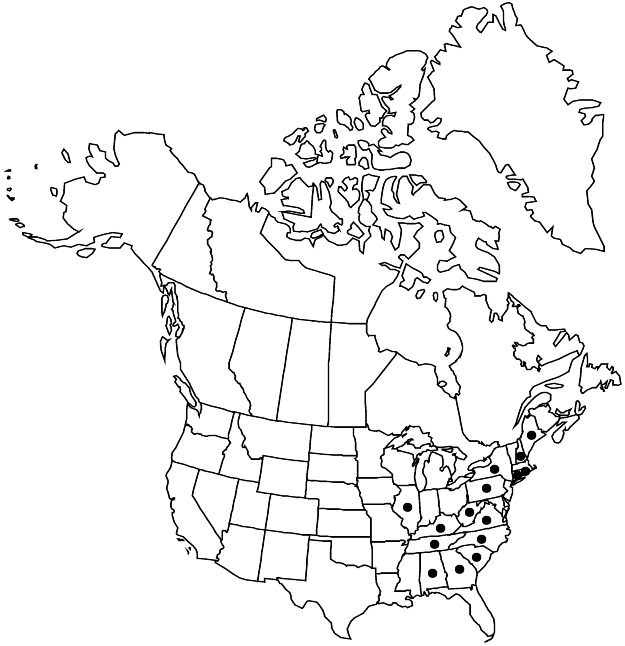Minuartia glabra
Bot. Jahrb. Syst. 57(Beibl. 126): 28. 1921.
Plants winter annual or annual. Taproots filiform. Stems erect or ascending, green, 9–20 cm, glabrous, internodes of all stems 2–7 times as long as leaves. Leaves overlapping proximally (basal rosette absent at flowering), connate proximally, with ± loose, scarious sheath 0.2–0.5 mm; blade ascending to spreading, green, 1-veined abaxially, flat, linear, 5–20(–30) × 0.5 mm, flexuous, margins not thickened, slightly scarious, smooth, apex green to purple, rounded to acute, dull, glabrous; axillary leaves absent. Inflorescences 8–15-flowered, open, leafy cymes; bracts linear to subulate, mostly herbaceous. Pedicels 0.5–2 cm, glabrous. Flowers: hypanthium disc-shaped; sepals obscurely veined, oblong-lanceolate, lanceolate, to elliptic (herbaceous portion oblong-lanceolate or lanceolate to elliptic), 1.5–4 mm, to 4.5 mm in fruit, apex green, ± rounded, not hooded, glabrous; petals clawed, broadly obovate, 1.5–2.2 times as long as sepals, apex rounded, shallowly notched. Capsules on stipe 0.1 mm or shorter, broadly ellipsoid, 3.5 mm, shorter than sepals. Seeds brown, obliquely triangular with adaxial groove, radicle prolonged into short beak, compressed, 0.5–0.8 mm, low-tuberculate. 2n = 20.
Phenology: Flowering spring–summer.
Habitat: Siliceous rock outcrops in woods
Elevation: 100-500 m
Distribution

Ala., Conn., Ga., Ill., Ky., Maine, N.H., N.Y., N.C., Pa., R.I., S.C., Tenn., Va., W.Va.
Discussion
Minuartia glabra, along with M. groenlandica (Retzius) Ostenfeld and M. uniflora (Walter) Mattfeld, comprise the so-called granite outcrop arenarias of the southeastern United States. These species have been studied extensively, both systematically (e.g., J. F. McCormick et al. 1971; R. E. Weaver 1970) and for pollination biology (R. Wyatt 1984).
At this time, we follow R. E. Weaver (1970) in maintaining Minuartia glabra separate from M. groenlandica. The species are very similar morpho-logically, including sharing clawed petals and obliquely triangular seeds, like those in most Sagina species but unique among North American Minuartia species; the annual versus perennial habit and, at least in the southeast, phenology and elevation can be used to distinguish these taxa. Further studies in northern populations may be warranted to resolve the question completely.
Selected References
None.